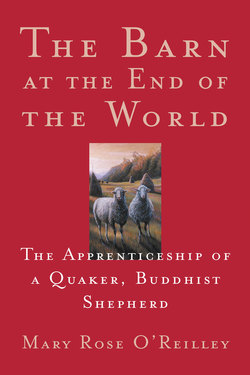Читать книгу The Barn at the End of the World - Mary Rose O'Reilley - Страница 17
На сайте Литреса книга снята с продажи.
ОглавлениеGreen Pastures
DID YOU READ YOUR HANDOUT on sheep parasites, Mary?” Ben asked as he loped from the office to the barn. I trotted behind him like an anxious puppy.
“Yes.”
“Then tell me how we would know to look at them if these sheep were infected?”
“Ummm. They’d be anemic and have diarrhea and be off their feed.”
“How would we know if they’re anemic?”
“The pink part under their eyes would be more white? …” I ventured. This is how moms know that children are anemic.
“Their gums,” said Ben, “would stay white when you push on them.”
Without pressing on any gums, we could see that these sheep were infected. They were scraggly looking and their backsides scoury (that is, covered in shit). First we shaved bottoms, a charming job. Then we caught and inoculated them with vermifuge. Last night I practiced flipping my border collie, Shep, so I have the moves down and can trip these feisty little fifty-pound Texel bucks without too much trouble. I easily flipped and inoculated fifteen without being inoculated back.
The sheep have parasites because they have been on pasture. We are conducting an experiment to compare sheep raised on pasture with sheep who have access only to the barn and its neighboring yards. One pastured sheep is blind from eating milk vetch.
“Factory farming”—often defined in terms of keeping the animals more confined—is a major political issue in Minnesota. Huge pig farms, in particular, with holding tanks of manure that sometimes leak and pollute the water table, are especially controversial. Observing this experiment, however, I see that some degree of confinement may be more comfortable and healthy for the animal.
